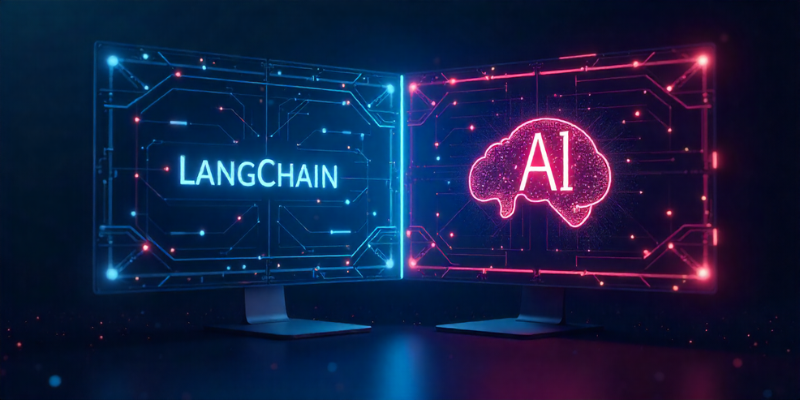The emergence of agentic systems represents a decisive shift in how enterprises approach automation. Traditional chatbots and task-based systems were limited to reactive interactions , answering prompts or executing predefined actions. LangChain-based agents, by contrast, enable proactive, autonomous workflows where AI doesn’t just respond but orchestrates, reasons, and collaborates across complex enterprise environments.
At the foundation of this transformation lies the concept of autonomous AI agents. These systems combine reasoning, memory, and tool integration to move beyond one-shot text generation. Instead of producing a single output, agents can perceive context, decide on next steps, and execute sequences of actions across connected tools and APIs. LangChain provides the framework for building these multi-step interactions, making it possible to connect large language models with real-world enterprise systems while maintaining structure, traceability, and context persistence.
This evolution redefines automation as an ongoing, adaptive process. An agent built on LangChain can interact with CRM data, analyze internal documents, update dashboards, and trigger operational workflows, all while learning from outcomes. The key difference lies in orchestration: agents communicate with each other to divide tasks, validate outputs, and refine results. This creates networks of specialized agents that mimic distributed human teams: researching, summarizing, reviewing, and executing, in continuous cycles of improvement.
Enterprises adopting this model are seeing automation extend far beyond traditional RPA or static workflows. Instead of simply processing data or generating reports, AI systems can now make contextual decisions, manage exceptions, and adapt to new information. This flexibility is essential for modern organizations where processes change rapidly and operational data streams in real time. LangChain’s modular design enables each agent to plug into different tools, APIs, and models, forming a unified system capable of reasoning across diverse data environments.
Another critical element is memory and observability. LangChain’s agent framework supports both short- and long-term memory layers, allowing agents to retain insights, recall prior actions, and maintain continuity across tasks. This persistent context enables better reasoning and reduces redundancy, while observability tools make it possible to monitor performance, audit decision paths, and ensure compliance, key requirements for enterprise-scale AI deployment.
LangChain agents are not replacing human teams but augmenting them, serving as intelligent intermediaries that accelerate workflows, reduce friction, and bridge systems that were once disconnected. As enterprises move from prompt-based automation to orchestrated, agentic intelligence, the boundaries between AI reasoning and business execution are blurring. What began as generative assistance is rapidly evolving into autonomous, end-to-end process orchestration, marking a new phase in enterprise automation driven by adaptable, interconnected AI agents.
At Tismo, we help enterprises harness the power of AI agents to enhance their business operations. Our solutions use large language models (LLMs) and generative AI to build applications that connect seamlessly to organizational data, accelerating digital transformation initiatives.
To learn more about how Tismo can support your AI journey, visit https://tismo.ai.
You May Also Like
These Related Stories
-1.png)
The Evolution from Software to Agentic Systems
-2.png)
From Generative AI to Agentic Intelligence: How GenAI Agents Evolve

.png?width=100&height=50&name=Tismo%20Logo%20Definitivo-01%20(2).png)

.png?width=800&height=400&name=Blogs%20Preview%20(6).png)
.png?width=800&height=400&name=Blogs%20Preview%20(41).png)


